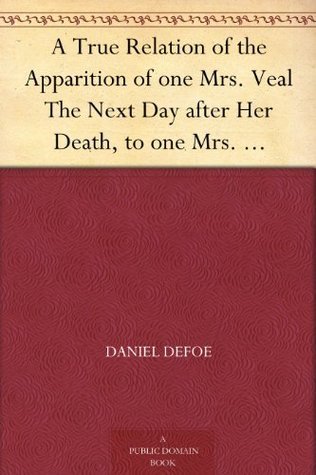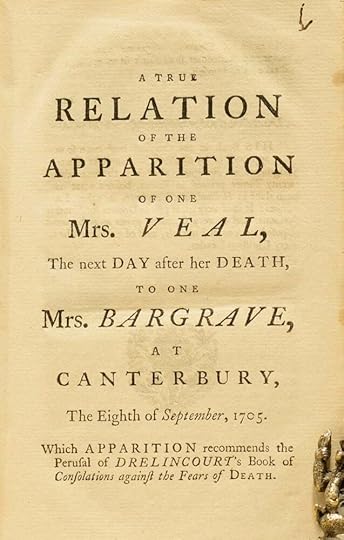What do you think?
Rate this book


24 pages, Kindle Edition
First published January 1, 1706

جهان به برم تنگ میگردد
گویی که این دیوارها مرا در خویش میفشارند
و این سقف نفسم را خفه میسازد
آه... هوا!
خیر، [خود کتاب را ندیدهام،] ولی آن شعرها را به خط خود نوشته دارم.
من تنها زیباترین و بهترین چیزهایی را که میتوانستم برای تو انتخاب کردم، نه آنکه بخواهم موجودی منفور را به زندگی بیاورم.
خانم بارگریوی عزیز، اگر چشم ایمان ما به اندازه چشمهای تنمان باز میبود، فرشتگان پاسدار خود را میدیدیم. ... از مشکلات خود دل رنجور مدار، و مطمئن باش خداوند متعال التفاتی خاص به تو دارد، و گرفتاریهایت آیت محبت خدایند، و وقتی آنچه را باید بکنند کردند، دست از سرت برمیدارند. ... خاطرجمع باش که گرفتاریهایت به زودی یا خودشان میروند، یا تو آنها را ترک خواهی گفت.
... اول میگفت خدا مفقود شده، بعد گفت خدا فریبکاره، و حتما فردا هم میگه خدا مرده! آخه پسرم! تو چی میخوای؟ دنیایی که توش خبری از خدا نیست؟ تو هیچ از غمهای مردم خبر داری؟ بعضیا نونی برای خوردن ندارن، بعضیا سقفی بالای سرشون ندارن، و بعضیا دوستی برای همصحبتی ندارن... تو هیچ میدونی روزانه چند نفر خودکشی میکنن، رگشون رو میزنن یا خودشونو حلقآویز میکنن؟ چرا؟ چون امید ندارن. اگه خدا براشون عیان بشه، نشونه مقدس رو به پیشونی بزنن یا حرز محافظ به دستشون ببندن، امید به زندگی پیدا میکنن. حالا تو کی هستی که میخوای این امید رو ازشون بگیری؟اگه میخوای خداشونو ازشون بگیری، به جاش میخوای به اونا چی بدی؟
خانم بارگریو گفت: «سرکار خانم، چشم ما روشن! مدتی است با ما غریبه شدهاید.» ولی افزود که خوشنود است او را میبیند، و رفت جلو او را ببوسد، و خانم ویل اقبال کرد، تا آنکه لبهاشان تقریبا به هم رسید؛ آنگاه خانم ویل دست به چشمهای خود کشید و گفت: «حالم چندان خوب نیست.» و چشماناش را هم گذاشت. به خانم بارگریو گفت دارد میرود مسافرت، و تصمیم گرفته پیش از رفتن حتما او را ببیند.
میدانید آتشی که زیر خاکستر میماند چه دوام و ثباتی دارد؟ عشق پنهانی، عشقی که انسان جرأت نمیکند هرگز با هیچکس درباره آن گفتوگو کند، به زبان بیاورد، به هر دلیلی که بخواهید -از لحاظ قیود اجتماعی، از نظر طبقاتی، به سبب اینکه معشوق ادراک نمیکند و به هر علت دیگری- آن عشق است که درون آدم را میخورد و میسوزاند، و آخرش مانند نقره گداخته شفاف و صیقلی میشود.
[خانم بارگریو] میگوید آقای محترمی سی کیلومتر راه پیموده، آمده قضیه را به گوش خود بشنود. و یک بار هم داستان را برای اتاقی پر از جمعیت تعریف کرده است.
نمیدانم چرا هرگاه جنبههایی از یک امر واقع به تصور قطعی یا برهانیِ ما نمیگنجد، در برابر آن امر واقع موضعگیری میکنیم.
خدایا توبه، برای اینکه دل خدیجه را بسوزانم، یک روز همین که رفت حمام و خانه خلوت شد، من هم رفتم سر گهواره بچه، سنجاق زیر گلویم را کشیدم، رویم را برگردانیدم و سنجاق را تا بیخ توی ملاج بچه فرو کردم. بعد هولکی از اطاق بیرون دویدم. خانم، این بچه دو شب و دو روز زبان به دهن نگرفت. هر فریادی که میزد بند دلم پاره میشد. هرچه برایش دعا گرفتند، و دوا و درمان کردند بیخود بود. روز دوم عصر مرد.
سحر یکشنبه، مریم مجدلیه و آن مریم دیگر به سر قبر رفتند. یکی از فرشتگان خداوند از آسمان پایین آمده، بر سنگ دهانه آن نشست. صورت فرشته میدرخشید و لباسش مثل برف سفید بود. نگهبانان با دیدن او به شدت ترسیده، و چون مرده، بیحرکت بر زمین افتادند. فرشته به زنان گفت: «نترسید! میدانم به دنبال عیسای مصلوب میگردید؛ او اینجا نیست! بیایید و جای جسدش را به چشم خود ببینید. و اکنون شتابان رفته، به شاگردانش بگویید که او به جلیل میرود تا ایشان را در آنجا ببیند.» زنان با ترسی آمیخته با شادیِ بسیار از قبر خارج شدند و رفتند تا پیغام فرشته را به ایشان بدهند. در همان حال که میدویدند، ناگهان عیسی را مقابل خود دیدند! او گفت: «سلام!» زنها به پاهای او افتادند و او را پرستش کردند. عیسی به ایشان فرمود: «نترسید! بروید و به برادران من بگویید که هر چه زودتر به جلیل بروند تا مرا در آنجا ببینند.»
This relation is matter of fact, and attended with such circumstances, as may induce any reasonable man to believe it. It was sent by a gentleman, a justice of peace, at Maidstone, in Kent, and a very intelligent person, to his friend in London, as it is here worded; which discourse is attested by a very sober and understanding gentlewoman, a kinswoman of the said gentleman's, who lives in Canterbury, within a few doors of the house in which the within-named Mrs. Bargrave lives; who believes his kinswoman to be of so discerning a spirit, as not to be put upon by any fallacy; and who positively assured him that the whole matter, as it is related and laid down, is really true; and what she herself had in the same words, as near as may be, from Mrs. Bargrave's own mouth, who, she knows, had no reason to invent and publish such a story, or any design to forge and tell a lie, being a woman of much honesty and virtue, and her whole life a course, as it were, of piety. The use which we ought to make of it, is to consider, that there is a life to come after this, and a just God, who will retribute to every one according to the deeds done in the body; and therefore to reflect upon our past course of life we have led in the world; that our time is short and uncertain; and that if we would escape the punishment of the ungodly, and receive the reward of the righteous, which is the laying hold of eternal life, we ought, for the time to come, to return to God by a speedy repentance, ceasing to do evil, and learning to do well: to seek after God early, if happily he may be found of us, and lead such lives for the future, as may be well pleasing in his sight.
An adventurous bookseller had ventured to print a considerable edition of a work by the Reverend Charles Drelincourt, minister of the Calvinist church in Paris, and translated by M. D'Assigny, under the title of "The Christian's Defence against the Fear of Death, with several directions how to prepare ourselves to die well." But however certain the prospect of death, it is not so agreeable (unfortunately) as to invite the eager contemplation of the public; and Drelincourt's book, being neglected, lay a dead stock on the hands of the publisher. In this emergency, he applied to De Foe to assist him, (by dint of such means as were then, as well as now, pretty well understood in the literary world,) in rescuing the unfortunate book from the literary death to which general neglect seemed about to consign it.
De Foe's genius and audacity devised a plan which, for assurance and ingenuity, defied even the powers of Mr. Puff in the Critic: for who but himself would have thought of summoning up a ghost from the grave to bear witness in favour of a halting body of divinity? There is a matter-of-fact, business-like style in the whole account of the transaction, which bespeaks ineffable powers of self-possession. [...]
She also mentioned Dr. Sherlock, the two Dutch books which were translated, written upon death, and several others. [...]
Then Mrs. Veal mentioned Dr. Kenrick's Ascetick, at the end of which he gives an account of the lives of the primitive Christians. [...]
Mr. Norris has a fine copy of verses, called Friendship in Perfection, which I wonderfully admire.
Damon and Pythias. Or, Friendship in perfection.
Pyth.
I.
'TIs true (my Damon) we as yet have been
Patterns of constant love I know,
We have stuck so close, no third could come between,
But will it (Damon) will it still be so?
Da.
II.
Keep your love true, I dare engage that mine
Shall like my Soul immortal prove.
In friendship's Orb how brightly shall we shine
Where all shall envy, none divide our love!
Pyth.
III.
Death will; when once (as 'tis by fate design'd)
T' Elysium you shall be remov'd,
Such sweet Companions there no doubt you'l find
That you'l forget that Pythias e're you lov'd.
Da.
IV.
No, banish all such fears, I then will be
Your Friend and guardian Angel too.
And tho with more refined Society
I'l leave Elysium to converse with you.
Pyth.
V.
But grant that after fate you still are kind,
You cannot long continue so,
When I like you become all thought and mind
By what mark then shall we each other know?
Da.
VI.
With care on your last hour I will attend,
And lest like Souls should me deceive
I closely will embrace my new-born friend,
And never after my dear Pythias leave.